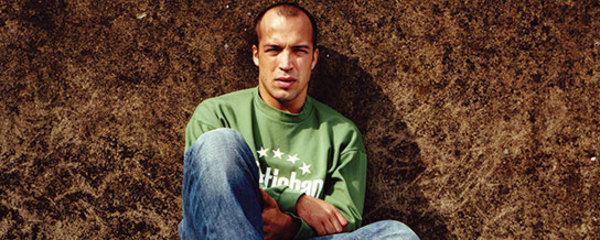Mylo’s Artist Tips
After a couple of years of being held up in copyright limbo, Mylo‘s Destroy Rock […]
Mylo’s Artist Tips
After a couple of years of being held up in copyright limbo, Mylo‘s Destroy Rock […]

After a couple of years of being held up in copyright limbo, Mylo‘s Destroy Rock & Roll (Breastfed/RCA) finally found a Stateside release–albeit with a few changes. The electro/pop/techno/rock masterpiece required quite a bit of retooling. Samples from Boy Meets Girl’s “Waiting for a Star to Fall” and Kim Carnes’ “Bette Davis Eyes” had to be flat-out re-recorded to skirt US copyright laws. But with Mylo’s prowess in the digital studio, you can be sure that it took longer to cut through the red tape than it did for the Scotsman (known to Mum as Myles MacInnes) to edit it all down. Here, Mylo provides a glimpse into his Mac’s applications folder.
1. Propellerheads Recycle 2.0
Recycle and its sister program, Reason, both rule. Recycle is quite a specific tool: You feed bits of audio into it, and then insert markers and chop the audio up into its constituent parts. The most straightforward use of it is to chop up drum loops if you’re programming drums, but I got quite into chopping up samples of other kinds. You can then feed the resulting file into the Dr. Rex module, which is just one part of [Reason 2.5].
2. Propellerheads Reason 2.5
This was probably the piece of software I used most when I was making the album. It’s a complete software studio. You have lots of modules and a sequencer as well. I noticed that there was a vocoder module, which I hadn’t used before, so I decided to play around with it and that was how I came to make “Drop the Pressure.” I think perhaps people have underestimated Reason, or dismissed it as a toy, but it’s very powerful once you get into it.
3. Digidesign Pro Tools
All of the big sequencer programs–Cubase, Pro Tools, Logic–do roughly the same thing: [They] let you put audio and MIDI tracks together and process the audio with plug-ins. The reason I got into Pro Tools is that when I was first getting into production in 2001, they were giving away a free eight-track version on the Digidesign website. I think the main thing is to find a program that you’re comfortable with.
4. Native Instruments Absynth
The one stand-alone synth I used on the album is a soft synth called Absynth. The version I have is 1-point-something. I think it’s changed enormously since then. The one I use has a nice homemade idiosyncratic feel to it, and you can download some wonderfully bizarre presets.

